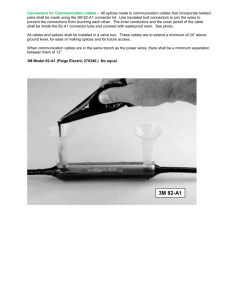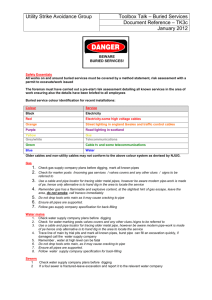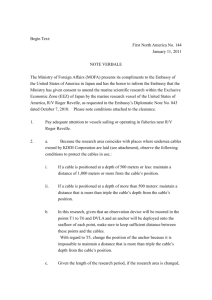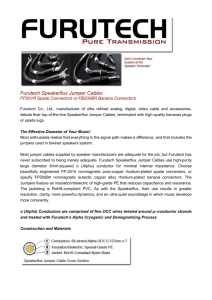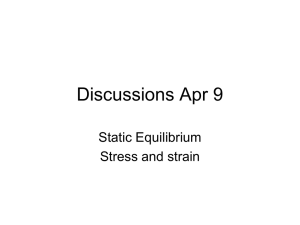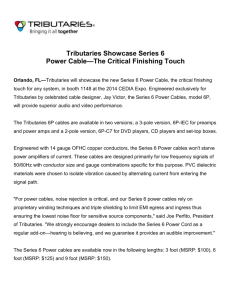Section #26 05 43.01 - Installation of Cables in Trenches and in Ducts
advertisement
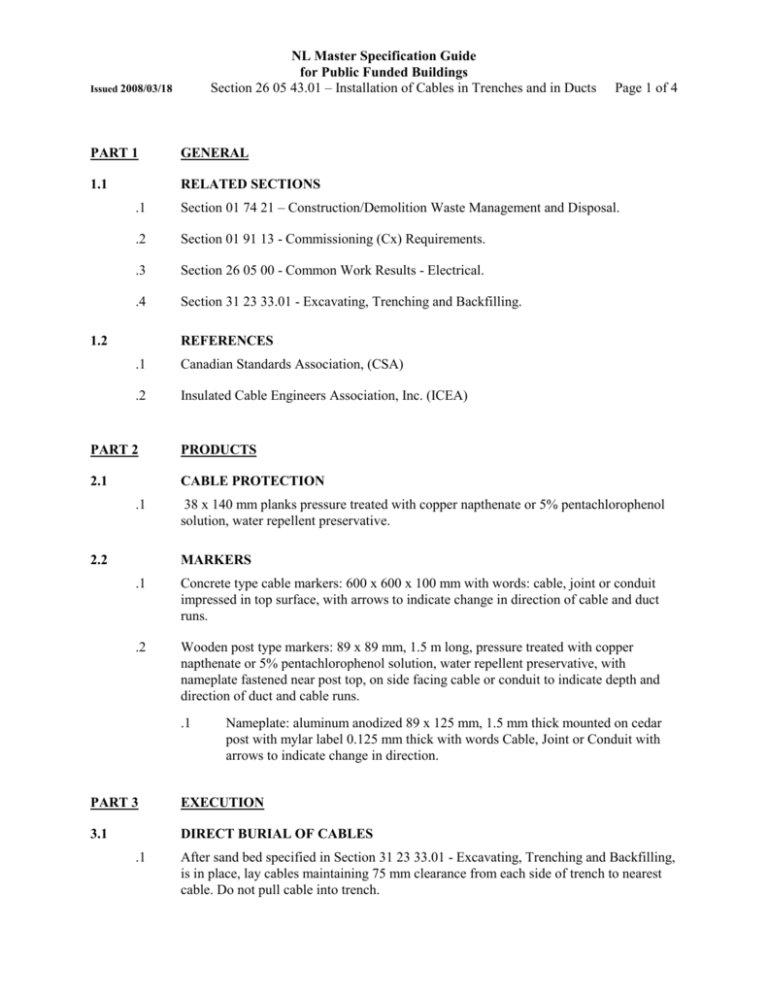
NL Master Specification Guide for Public Funded Buildings Section 26 05 43.01 – Installation of Cables in Trenches and in Ducts Issued 2008/03/18 PART 1 GENERAL 1.1 RELATED SECTIONS Page 1 of 4 .1 Section 01 74 21 – Construction/Demolition Waste Management and Disposal. .2 Section 01 91 13 - Commissioning (Cx) Requirements. .3 Section 26 05 00 - Common Work Results - Electrical. .4 Section 31 23 33.01 - Excavating, Trenching and Backfilling. 1.2 REFERENCES .1 Canadian Standards Association, (CSA) .2 Insulated Cable Engineers Association, Inc. (ICEA) PART 2 PRODUCTS 2.1 CABLE PROTECTION .1 2.2 38 x 140 mm planks pressure treated with copper napthenate or 5% pentachlorophenol solution, water repellent preservative. MARKERS .1 Concrete type cable markers: 600 x 600 x 100 mm with words: cable, joint or conduit impressed in top surface, with arrows to indicate change in direction of cable and duct runs. .2 Wooden post type markers: 89 x 89 mm, 1.5 m long, pressure treated with copper napthenate or 5% pentachlorophenol solution, water repellent preservative, with nameplate fastened near post top, on side facing cable or conduit to indicate depth and direction of duct and cable runs. .1 Nameplate: aluminum anodized 89 x 125 mm, 1.5 mm thick mounted on cedar post with mylar label 0.125 mm thick with words Cable, Joint or Conduit with arrows to indicate change in direction. PART 3 EXECUTION 3.1 DIRECT BURIAL OF CABLES .1 After sand bed specified in Section 31 23 33.01 - Excavating, Trenching and Backfilling, is in place, lay cables maintaining 75 mm clearance from each side of trench to nearest cable. Do not pull cable into trench. NL Master Specification Guide for Public Funded Buildings Section 26 05 43.01 – Installation of Cables in Trenches and in Ducts Issued 2008/03/18 Page 2 of 4 .2 Provide offsets for thermal action and minor earth movements. Offset cables 150 mm for each 60 m run, maintaining minimum cable separation and bending radius requirements. .3 Make termination and splice only as indicated leaving 0.6 m of surplus cable in each direction. .1 Make splices and terminations in accordance with manufacturer's instructions using approved splicing kits. .4 Underground cable splices not acceptable. .5 Minimum permitted radius at cable bends for rubber, plastic or lead covered cables, 8 times diameter of cable; for metallic armoured cables, 12 times diameter of cables or in accordance with manufacturer's instructions. .6 Cable separation: .1 .2 .3 .4 .5 .6 .7 3.2 Maintain 75 mm minimum separation between cables of different circuits. Maintain 300 mm horizontal separation between low and high voltage cables. When low voltage cables cross high voltage cables maintain 300 mm vertical separation with low voltage cables in upper position. At crossover, maintain 75 mm minimum vertical separation between low voltage cables and 150 mm between high voltage cables. Maintain 300 mm minimum lateral and vertical separation for fire alarm and control cables when crossing other cables, with fire alarm and control cables in upper position. Install treated planks on lower cables 0.6 m in each direction at crossings. After sand protective cover specified in Section 31 23 33.01 - Excavating, Trenching and Backfilling, is in place, install continuous row of overlapping 38 x 140 mm pressure treated planks as indicated to cover length of run. CABLE INSTALLATION IN DUCTS .1 Install cables as indicated in ducts. .1 Do not pull spliced cables inside ducts. .2 Install multiple cables in duct simultaneously. .3 Use CSA approved lubricants of type compatible with cable jacket to reduce pulling tension. .4 To facilitate matching of colour coded multiconductor control cables reel off in same direction during installation. .5 Before pulling cable into ducts and until cables are properly terminated, seal ends of lead covered cables with wiping solder; seal ends of non-leaded cables with moisture seal tape. NL Master Specification Guide for Public Funded Buildings Section 26 05 43.01 – Installation of Cables in Trenches and in Ducts Issued 2008/03/18 .6 3.3 Page 3 of 4 After installation of cables, seal duct ends with duct sealing compound. MARKERS .1 Mark cable every 150 m along cable runs and changes in direction. .2 Mark underground splices. .3 Where markers are removed to permit installation of additional cables, reinstall existing markers. .4 Install wooden post type markers. .5 Lay concrete markers flat and centred over cable with top flush with finish grade. 3.4 FIELD QUALITY CONTROL .1 Perform tests in accordance with Section 26 05 00 - Common Work Results - Electrical and Section 01 91 13 – Commissioning (Cx) Requirements. .2 Perform tests using qualified personnel. Provide necessary instruments and equipment. .3 Check phase rotation and identify each phase conductor of each feeder. .4 Check each feeder for continuity, short circuits and grounds. Ensure resistance to ground of circuits is not less than 50 megohms. .5 Pre-acceptance tests. .1 .2 .6 After installing cable but before splicing and terminating, perform insulation resistance test with 1000 V megger on each phase conductor. Check insulation resistance after each splice and/or termination to ensure that cable system is ready for acceptance testing. Acceptance Tests .1 .2 .3 .4 Ensure that terminations and accessory equipment are disconnected. Ground shields, ground wires, metallic armour and conductors not under test. High Potential (Hipot) Testing. .1 Conduct hipot testing at 100 % of original factory test voltage in accordance with manufacturer's recommendations. Leakage Current Testing. .1 Raise voltage in steps from zero to maximum values as specified by manufacturer for type of cable being tested. .2 Hold maximum voltage for specified time period by manufacturer. .3 Record leakage current at each step. NL Master Specification Guide for Public Funded Buildings Section 26 05 43.01 – Installation of Cables in Trenches and in Ducts Issued 2008/03/18 Page 4 of 4 .7 Provide Owner’s Representative with list of test results showing location at which each test was made, circuit tested and result of each test. Include results in Commissioning Manual. .8 Remove and replace entire length of cable if cable fails to meet any of test criteria. END OF SECTION
